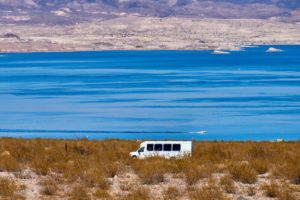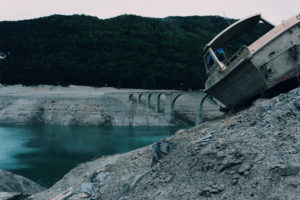Your Ultimate Guide to Tongariro Alpine Crossing Transport: Everything You Need to Know
Welcome to your comprehensive guide to Tongariro Alpine Crossing transport! If you’re gearing up for an adventure in one of New Zealand’s most iconic landscapes, you’re in for a treat.
However, navigating the logistics of getting to and from the trailhead can be a bit overwhelming.
But don’t worry, because I’m here to walk you through every aspect of transportation, from choosing the right option to insider tips for a seamless journey.

Common Questions and Concerns
Let’s address some of the common questions and concerns you might have about Tongariro Alpine Crossing transport:
How do I get to Tongariro Alpine Crossing?
Exploring transportation options: Whether you’re driving yourself, taking a shuttle, or relying on public transport.
Considering factors like convenience, cost, and environmental impact.
Addressing concerns about accessibility and road conditions.
What’s the best way to arrange transportation?
Comparing different shuttle services: Evaluating factors like pickup locations, departure times, and pricing.
Booking in advance vs. on the day: Weighing the pros and cons of each approach and securing your spot.
Exploring alternatives like carpooling or ridesharing for added flexibility.
What should I expect during the journey?
Navigating the roads: Tips for driving safely in the area, including information on parking and vehicle restrictions.
Enjoying the scenery: Making the most of your travel time with stunning views along the way and recommended stops for photo opportunities.
Considering the environmental impact of different transportation options and ways to minimize your footprint.
How do I ensure a smooth return trip?
Planning your return: Timing your hike to coincide with shuttle pickups and ensuring you have enough time to complete the trail.
Having a backup plan: What to do in case of unexpected delays, changes in weather, or emergencies.
Tips for post-hike relaxation and recovery, including recommended dining spots and accommodation options in the area.
Choosing the Right Transportation Option
Now that we’ve covered some of the basics, let’s delve deeper into your transportation choices:
Driving Yourself:
Pros: Flexibility to set your own schedule, explore surrounding areas at your leisure, and store extra gear in your vehicle.
Cons: Limited parking availability, especially during peak seasons, and potential challenges with navigating unfamiliar roads.
Driving to Tongariro Alpine Crossing can be a convenient option for those who prefer the flexibility of setting their own schedule and exploring surrounding attractions at their own pace.
However, it’s important to note that parking at the trailhead is limited and fills up quickly, particularly during peak seasons like summer.
Additionally, the road leading to the trailhead can be narrow and winding, with sections of gravel and potential hazards like livestock crossing.
It’s essential to drive with caution and adhere to posted speed limits and road signs to ensure your safety and the safety of others on the road.
Taking a Shuttle:
Pros: Convenient pickup and drop-off directly at the trailhead, reducing stress and hassle, and the opportunity to relax and enjoy the scenery en route.
Cons: Cost can vary depending on the service provider and time of year, and availability may be limited during peak seasons.
Taking a shuttle to Tongariro Alpine Crossing is a popular choice for many visitors, offering convenience and peace of mind knowing that transportation logistics are taken care of.
Most shuttle services offer multiple pickup locations in nearby towns like Taupo, Turangi, and National Park Village, making it easy to find a convenient departure point.
Additionally, shuttle drivers are often knowledgeable about the area and can provide valuable insights and recommendations for your hike. While shuttle tickets may come at a cost, especially during peak seasons, many visitors find the convenience and comfort well worth it.
Using Public Transport:
Pros: Environmentally friendly option with the potential for cost savings, and the opportunity to connect with local communities and fellow travelers.
Cons: Limited schedules and routes may require careful planning and coordination, and longer travel times compared to other transportation options.
Using public transport to reach Tongariro Alpine Crossing is a sustainable choice that allows you to minimize your environmental impact and support local communities. While options may be more limited compared to private shuttles or driving yourself, it’s still possible to reach the trailhead using a combination of buses and trains.
InterCity offers bus services to National Park Village from major cities like Auckland, Wellington, and Hamilton, with connections to the Tongariro Alpine Crossing shuttle service.
Alternatively, the Northern Explorer train provides scenic rail journeys between Auckland and Wellington, with a stop in National Park Village. While public transport may require more planning and coordination compared to other options, it’s a great way to experience New Zealand’s diverse landscapes and connect with fellow travelers along the way.

Insider Tips for a Seamless Experience
Here are some insider tips to make your Tongariro Alpine Crossing transport experience even smoother:
- Book in Advance: Secure your transportation early, especially during busy periods, to avoid disappointment. Shuttle services and parking spaces can fill up quickly, particularly during peak seasons like summer.
- Pack Light: Keep your belongings to a minimum to maximize comfort during your journey. Essentials like water, snacks, sunscreen, and a first-aid kit are must-haves for a day hike.
- Stay Informed: Check weather forecasts and trail conditions before setting out, and be prepared for any changes. New Zealand’s weather can be unpredictable, so it’s important to dress in layers and pack accordingly.
- Respect the Environment: Practice Leave No Trace principles and be mindful of the fragile ecosystem around you. Stay on designated trails, dispose of waste properly, and avoid disturbing wildlife.
Conclusion
With the right transportation plan in place, your Tongariro Alpine Crossing adventure is sure to be unforgettable. Whether you choose to drive yourself, take a shuttle, or use public transport, the journey is all part of the experience.
So, pack your bags, lace up your boots, and get ready for an adventure of a lifetime!
FAQs
Do I need to book a shuttle for the Tongariro Alpine Crossing?
Yes, it is highly recommended to book a shuttle to and from the Tongariro Alpine Crossing. Parking at the trailhead is very limited, so taking a shuttle is the best way to get to the start of the hike. Many accommodation providers and shuttle companies offer shuttle services.
How much does the Tongariro Alpine Crossing shuttle cost?
The typical cost for a return shuttle to the Tongariro Alpine Crossing is around $50 per person. Shuttle prices can vary slightly depending on the provider. Some accommodation providers may include the shuttle cost in your booking.
When should I book my Tongariro Alpine Crossing shuttle?
You can typically book your shuttle the day before your hike, though it’s best to book in advance during peak seasons like holidays. There’s no need to book your return shuttle time, as shuttles run regularly throughout the afternoon.
What time do the Tongariro Alpine Crossing shuttles run?
Shuttle services typically start as early as 5:45 AM and run up until around 9:30 AM to get hikers to the trailhead. Return shuttles then run regularly throughout the afternoon until around 6 PM. It’s recommended to start the hike early to ensure you have enough daylight.
Can I park at the Tongariro Alpine Crossing trailhead?
No, parking at either the start or end of the Tongariro Alpine Crossing is very limited, with a 4-hour time limit during the summer season. The best option is to take a shuttle to avoid any parking issues.






